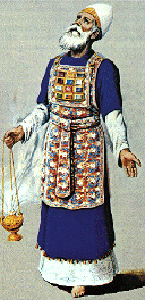 By Rabbi Reuven Spolter, Director of Recruiting and Special Projects
By Rabbi Reuven Spolter, Director of Recruiting and Special ProjectsWhat's the worst gift that you've ever received? When I got married, my wife and I received a plastic platter in the shape of a fish. We found it both strange and rather ugly. So we kept it. Each of us has a gift like that. I'm sure we've all gotten pretty bad gifts. But in each case, at least someone tried to give you something nice – even though it turned out to be a miserable failure. But what if your neighbor "gave" you the flu – on purpose? Would you consider it a "gift"?
Parshat Metzora relates the very unusual appearance of nigei batim, blemishes that appear on the walls of one's home. The Torah describes the procedure requiring the removal of the tzara'at in order to purify the home. Yet, the language describing this particular tzara'at raises an important question. In other cases of tzara'at, the Torah describes the affliction in neutral language: אדם כי יהיה בעור בשרו שאת – "if a person has in his skin a blemish…" The Torah doesn’t make any judgments about the wound. It's there. How should he act? But when describing tzara'at of the home the Torah says,
The word ונתתי doesn't really mean "and I put." It means "and I give," which leads us to wonder, what type of gift is tzara'at on one's home? I can think of many things I'd rather have instead of having to knock down parts of my home. Why then does the Torah use the verb לתת – "to give" when describing tzara'at of the home?כי תבאו אל ארץ כנען אשר אני נותן לכם אחזה, ונתתי נגע צרעת בבית ארץ אחזתכםWhen you come into the land of Canaan, which I give to you for a possession, and I put the plague of leprosy in a house of the land of your possession.
Rashi gives the famous answer that the Emorites hid money in the walls of their homes before the Jews conquered the land. So, when Jews moved into their homes, the homes broke out with hives, so that when the people knocked down the walls they found the money.
But the Yalkut Meam Loez (Vayikra page 153) answers the question in a way that can give us new appreciation for the trials and tribulations that we have experienced this past year in the Land of Israel.
When they originally built their homes, the Emorites dedicated their construction to their idol of choice, thus infusing these homes and buildings with a רוח טומאה – a spirit of impurity which would defile anything that dwelled in those homes. Because Hashem wished to give us the Land and that His presence should dwell in it, He did not wish for his Shechinah to dwell in a place of Tum'ah. For this reason, he sent blemishes in the walls of the homes containing the defilement, so that the people could remove them and purify their new homes, themselves, and their new Land.
Meam Loez asks us to see trials and tribulations from a new perspective. Although difficult to appreciate, sometimes destruction is actually constructive. If we succeed in removing the spirit of Tum'ah, and replace it with a sprit of purity, then the tzara'at was indeed a gift, even if it didn't seem so at first.
This week we'll celebrate the 61st anniversary of the great gift from Hashem that is the State of Israel. Like tzara'at habayit, sometimes we might feel tempted to look at the difficulties and struggles that Israel must deal with and think, "Some gift. Who needs all these troubles?" Why did we have to add more names to the list of the fallen during the past year? Why must we keep fighting wars to defend our right to live in our God-given Land?
But when we place these struggles in context and see the tremendous growth, bounty and blessing that is the State to not only the Jewish people, but to the world, we realize that we have a lot to be grateful for.
And one day we will also realizes that even the blemishes – which we commemorate on Yom Hazikaron before we celebrate Yom Ha'atzmaut – were a necessary part of the process that brings about the needed purification of Eretz Yisrael.









